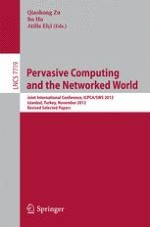This book constitutes the refereed post-proceedings of the Joint International Conference on Pervasive Computing and the Networked World, ICPCA-SWS 2012, held in Istanbul, Turkey, in November 2012. This conference is a merger of the 7th International Conference on Pervasive Computing and Applications (ICPCA) and the 4th Symposium on Web Society (SWS). The 53 revised full papers and 26 short papers presented were carefully reviewed and selected from 143 submissions. The papers cover a wide range of topics from different research communities such as computer science, sociology and psychology and explore both theoretical and practical issues in and around the emerging computing paradigms, e.g., pervasive collaboration, collaborative business, and networked societies. They highlight the unique characteristics of the "everywhere" computing paradigm and promote the awareness of its potential social and psychological consequences.
